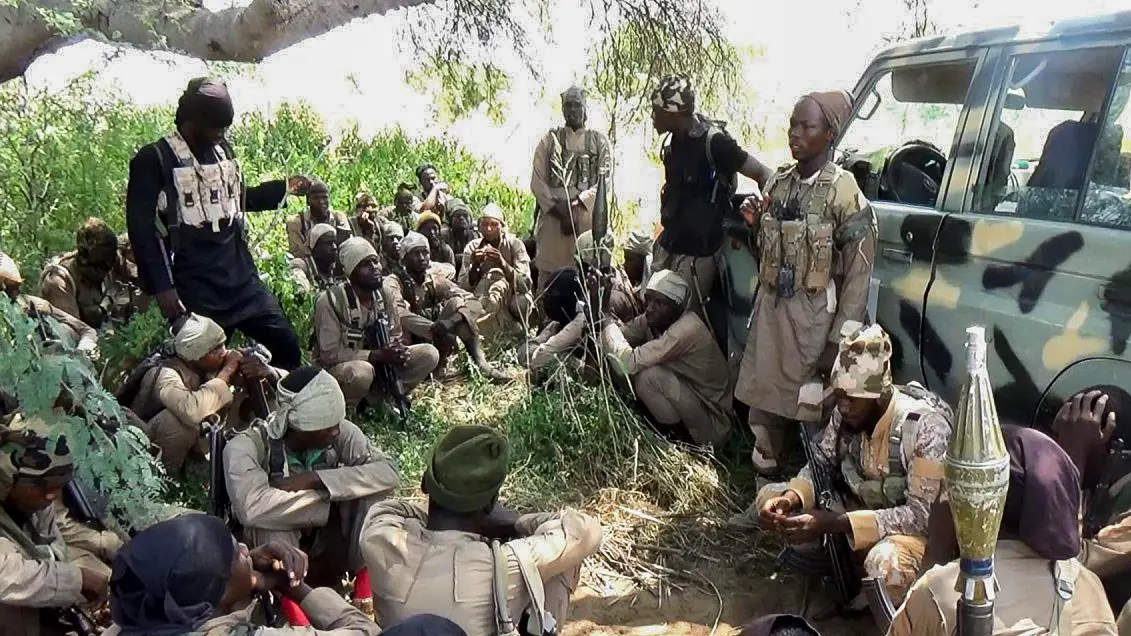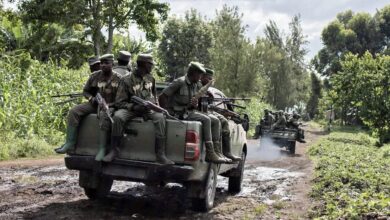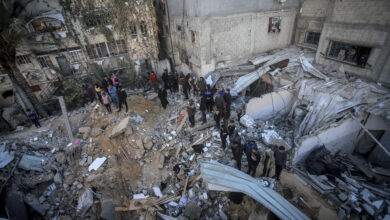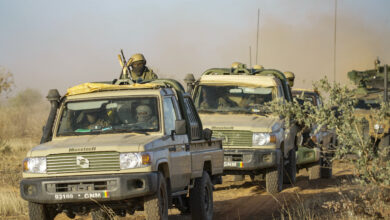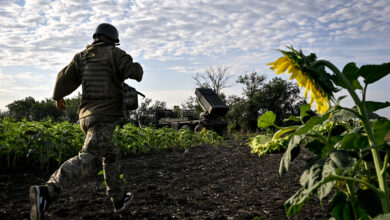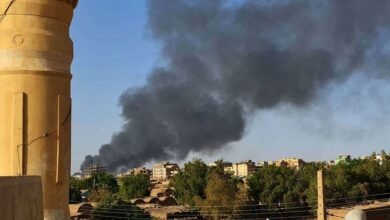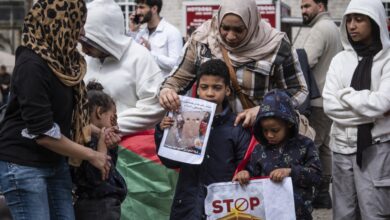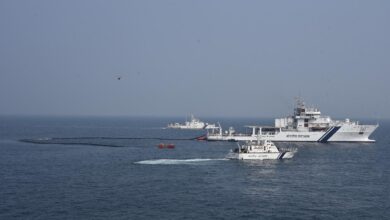Boko Haram militants killed 14 men who were collecting firewood in northeast Nigeria, residents and a militia told AFP, the latest deadly incident in the troubled Lake Chad area.
The bodies were found by other firewood collectors at Duwabayi village near the garrison town of Monguno in Borno state late on Tuesday, April 30.
“The bodies of the 14 men were evacuated to the police station in Monguno after some people reported seeing the bodies,” an anti-Boko Haram militia leader in the town said.
“Fourteen dead bodies were brought this evening to Monguno and people have been going to the police station to see if they could identify them,” Monguno resident Kulo Gana said.
Another resident, Bunami Mukhtar, said the corpses had “bullet wounds.”
The area has been seen intense fighting since late last year, when militants from the Islamic State West Africa Province faction of Boko Haram, the dominant insurgent group in the Lake Chad area, significantly stepped up attacks in the region.
Duwabayi village was abandoned last year when residents fled to camps in Monguno due to insurgent attacks. People in the camps rely on food aid to eat but some turn to collecting firewood to sell.
The charity Medecins Sans Frontieres (Doctors Without Borders) said in early April that around 30,000 people in Monguno were in “acute need of shelter and other basic necessities … after fleeing fighting between government forces and armed opposition groups.”
Monguno is around 100 km (62 miles) northeast of Borno state capital Maiduguri. It has been repeatedly attacked by insurgents who have made several failed attempts to overrun the large military base located just outside the town.

In late December, ISWAP fighters overran two military bases in and around the fishing town of Baga, around 50 km (31 miles) north of Monguno. Troops from the two bases – a Multinational Joint Task Force base and a naval base – withdrew to another naval base at Fish Dam, but that base was later attacked by ISWAP fighters. Images released by Islamic State appeared to show large quantities of weapons, vehicles and other equipment captured during the fighting in and around Baga.
ISWAP also attacked nearby military locations in Cross-Kauwa, Kukawa, Kekeno and Bunduram, and made three unsuccessful attempts to overrun Monguno, prompting preparations for a military offensive in the area late last year.
The fighting triggered a “massive displacement” of civilians to already overcrowded camps in Monguno and Maiduguri, the United Nations said in January.
Nigerian troops reportedly returned to Baga on January 10, but the town – and the wider area – has been contested since the initial onslaught in December.
On February 21, the regional MNJTF, comprising troops from Nigeria, Niger, Chad and Cameroon, launched Operation Yancin Tafki which it says is aimed at “making islands and other settlements in Lake Chad untenable for Boko Haram Terrorists,” and more than 500 Chadian soldiers entered Nigeria to battle the insurgents. MNJTF troops have engaged militants in Nigeria, Niger and Chad.
Recent ISWAP attacks in the Monguno area
ISIS frequently publishes claims about its activities in the area, but the MNJTF and the Nigerian military rarely comment on the ongoing counter-insurgency operations, making an accurate assessment of the security situation around Lake Chad difficult.
Even if they cannot be definitively confirmed, most if not all of the attacks claimed by ISIS appear to have occurred, although casualties sustained by government forces are habitually exaggerated. The military tends to downplay the insurgents’ effectiveness, rarely acknowledging engagements and seemingly understating casualties and equipment losses.
In its most recent statement, ISIS claimed ISWAP fighters on April 29 clashed with the MNJTF in Baga. It said two “explosive devices” were employed in the attack in which 33 MNJTF personnel were killed or injured, and that five vehicles were destroyed.
On April 25, ISIS published a video via its Amaq propaganda agency showing a man being beheaded, claiming he was an MNJTF soldier and that the execution took place near Monguno.
Two Chadian soldiers were killed and at least 20 other personnel were injured in an attack on the MNJTF at Cross Kauwa, about 30 km north of Monguno on April 18. The MNJTF said 39 insurgents were killed, while Chad said 52 militants were killed.
ISIS claimed via Amaq that Islamic State fighters had killed and wounded MNJTF personnel in the town of “Cross” on April 16, and claimed that a Nigerian army “tank” and three other vehicles were destroyed in an ambush in “Cross” on April 14. ISIS in a statement claimed ISWAP fighters attacked a military base in Baga, also on April 14.
On April 13, ISIS released a series of images it said showed ISWAP fighters firing mortars at Nigerian army positions in Monguno. ISIS had previously claimed that ISWAP fighters fired mortars at Nigerian army positions in Monguno on March 21. It also claimed that five MNJTF troops were killed in Monguno the same day, and via its Amaq claimed 10 soldiers were killed west of the town on the Gajiram road.
The jihadist group known as Boko Haram began its decade-long bloody insurgency in northeastern Nigeria in 2009 but it has since spread into neighboring Niger, Chad and Cameroon, prompting a regional military response. More than 27,000 people have been killed and two million others displaced, sparking a dire humanitarian crisis in the region.
Boko Haram split into two factions in mid-2016. One, led by long-time leader Abubakar Shekau, is notorious for suicide bombings and indiscriminate killings of civilians. Shekau pledged allegiance to ISIS leader Abu Bakr Al-Baghdadi in March 2015, but ISIS central only gives formal backing to the other faction, which it calls Islamic State West Africa Province.
The ISWAP faction, which largely focuses on attacking military and government targets, was led by Abu Mus’ab Al-Barnawi, but in March, audio recordings revealed that ISIS appointed Abu Abdullah Idris bin Umar, also known as Ibn Umar al-Barnawi, as leader. ISIS has not yet made a public statement confirming the change.
On April 30, the U.S. Ambassador-at-Large and Coordinator for Counterterrorism Nathan A. Sales said that the U.S. assesses that Boko Haram and ISWAP “have been responsible for over 35,000 deaths since 2011.”
With reporting from AFP

